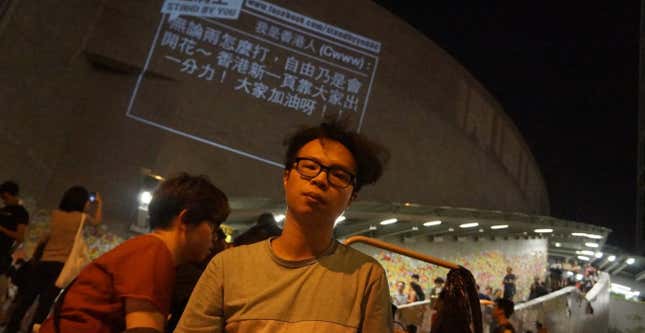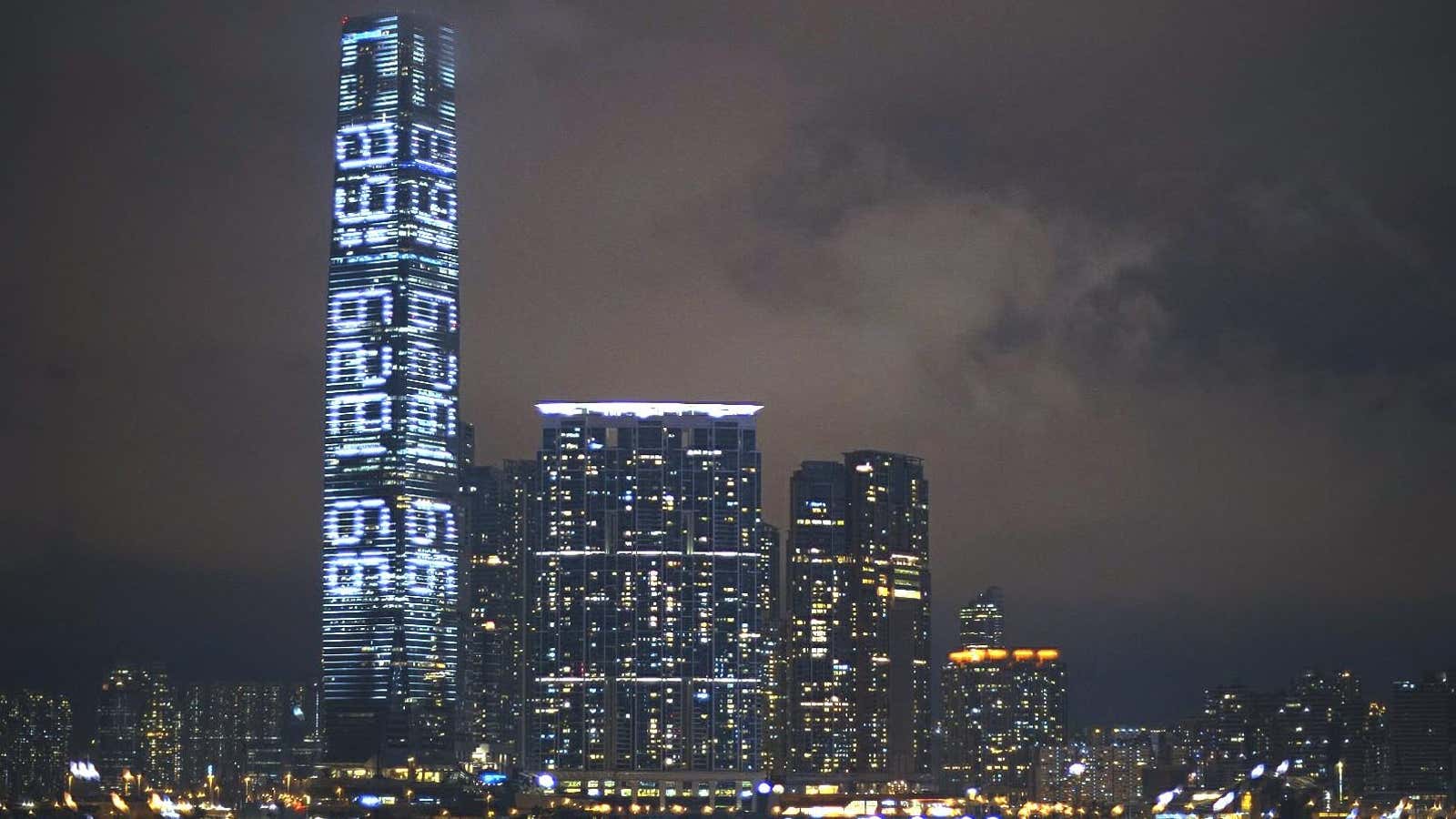Hong Kong
There are 31 years to go before the 50 years of an unchanged “one country, two systems” promised to Hong Kong expires, and the countdown has already begun.
A politically sensitive public art installation about the 2047 deadline was yanked from public view this week, escalating discussion in Hong Kong far beyond the meaning of the work itself. The situation threatens to define a new set of rules in a city striving to be a cultural hub, as self-censorship is on the rise.
The row is still ongoing, but the underlying dilemma is clear: Can genuine artistic freedom in Hong Kong be maintained until 2047 and beyond, even as funding for the arts increasingly comes from the government and wealthy landlords with ties to mainland China?
Hong Kong is the world’s most important art trading hub after New York and London, but the city’s own homegrown arts scene is an anomaly, backed by government funding and a handful of rich patrons. Government funding for the arts has nearly doubled from 2008, to HK$4 billion this fiscal year, as bureaucrats try to boost local arts to fill the theaters and galleries being created at the West Kowloon Cultural District, East Kowloon Cultural Center, and at the revamped historic Central Police Station compound.
Meanwhile, the city’s wealthy landlords and managers of public spaces are increasingly funding art projects to dress up their malls and apartment buildings, and creating their own arts foundations—but most remain heavily beholden to Beijing because of their vast commercial interests in mainland China.
Many of them are property tycoons, with a strong foothold in major cities like Beijing and Shanghai, expanding further inland to cities like Chengdu and Chongqing. Making big bucks in property in China isn’t possible without a harmonious relationship with Beijing.
The removal of the installation this week raised critical questions for Hong Kong’s future, including:
- Does whoever pays for any artistic endeavor have the right to censure the true intent of artists and monopolize the interpretation of an artwork?
- Can artists only get their works funded and shown if the meaning of their creative works is “approved” by the sponsor?
- If so, what’s the difference between Hong Kong and mainland China if the arts and the media exist to serve the ruling party?
The Countdown Machine
The work in question is a light installation entitled “Our 60-second friendship begins now.” It’s part of an exhibition by the government’s Arts Development Council called ”Fifth Large-Scale Public Media Art Exhibition: Human Vibrations.” It was projected onto the facade of Hong Kong’s tallest building, the ICC tower.
Artists Sampson Wong and Jason Lam originally said it was an homage to Wong Kar-wai’s film Days of Being Wild, in which Hong Kong icon Leslie Cheung tells his love interest, played by Maggie Cheung, that their friendship begins at this one minute and they both stare at a clock as the minute counts down.
But when it opened on May 18, Wong and Lam told the media there was another interpretation of the work.
One minute of the original nine-minute and 30-second display, “Countdown Machine,” showed a countdown to the expiration of the “one country, two systems” arrangement in 2047, reflecting Hong Kong anxiety over Beijing’s increasing control over the city’s affairs, and a potentially bleak future.
It ran for several days on the ICC tower, which is owned by Sun Hung Kai Properties. That company is part of Hong Kong’s billionaire Kwok brothers‘ massive property empire, which is expanding on the mainland.
The installation started on the second day of Zhang Dejiang’s visit to Hong Kong. A top leader of the Standing Committee of the Communist Party’s Politburo, Zhang is ranked just below China’s president Xi Jinping and premier Li Keqian. The projection was highly visible on both sides of Victoria Harbor and probably from Zhang’s hotel room at the waterfront Grand Hyatt.
Four days later, in the middle of the night, the council accused the artist duo of breaking their contract, saying they “changed the title and statement of their work, and publicized these changes without consulting the curator nor HKADC,” and were disrespectful. The installation was pulled on May 22.
Last night, the tower’s “light show” included floating cartoon hearts.
Breaking the rules
I had a long conversation with Caroline Ha Thuc, independent curator of the government-funded exhibition.
She stressed that the statement was not a result of pressure from the council, nor Sun Hung Kai Properties. Instead, Wong and Lam’s action broke the agreement, she said.
“It was made very clear [at the beginning] that political statements cannot be made,” Ha Thuc told me. “Artists have hidden messages for artworks for centuries and they are open for interpretation. But amid the visit of Zhang Dejiang, the artists suddenly reduced the artwork to a straight-forward political statement. The artists did not respect the rules.”
The artists told the media in a release that they were aware that if their message was made public earlier, their show would have been cancelled. The duo is best-known for the “Add Oil Machine” of the 2014 Umbrella Movement, which projected messages of support from around the world on the facade of the government headquarters in the Admiralty district.

Late on May 23, the artists hit back, arguing that they did not change the content nor the title of the work, and asked the council to revoke its statement.
Rethinking the rules

What if Hong Kong’s rules about public exhibitions are wrong in the first place?
After all, the Victoria and Albert Museum in London’s “Disobedient Objects” exhibition in 2014 contained politically-loaded messages, including items such as yellow umbrellas from the Umbrella Movement. No one thought that meant the museum endorsed any of the political messages featured in the show.
M+, the visual culture museum to open in the government-funded West Kowloon Cultural District in 2019, earlier this year presented the Sigg Collection exhibition and provocative works, including photography of the Tiananmen massacre by Liu Heung-shing. This was not taken as the political stance of the institution either.
Ha Thuc said there are rules when it comes to private sponsorship for the arts, and the incident has sparked further debates concerning freedom of artistic expression in Hong Kong. “What will the rules be to have art in public space in collaboration with private companies? It is a challenging question and I don’t have an answer for that,” she said.
Whatever the answer is, one thing Hong Kong doesn’t want is another generation of people kowtowing to the authorities and money. We’ve had enough of them already.
